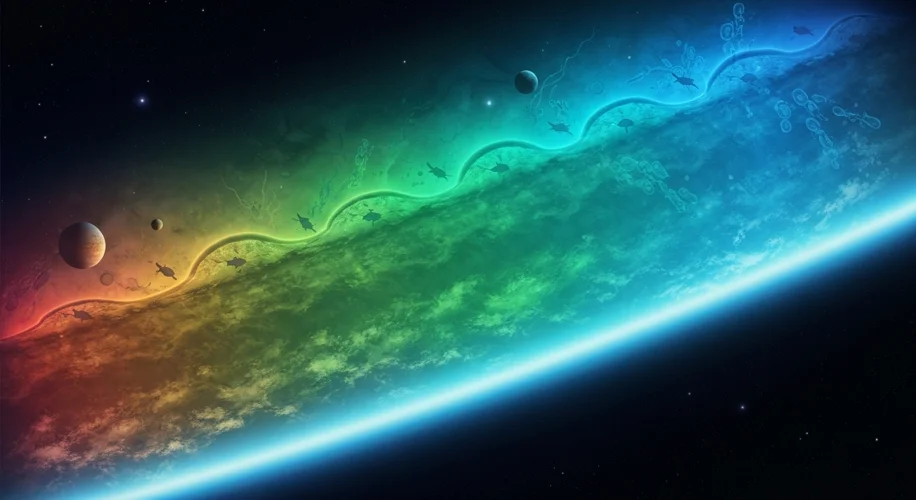Did you know our planet’s air wasn’t always breathable? It’s taken billions of years for Earth’s atmosphere to become what it is today, and a recent study in Nature dives deep into a crucial, two-billion-year period of this transformation – the “transitional oxygenation.” As someone with a background in atmospheric science, I find this stuff absolutely fascinating because it directly relates to how life, as we know it, could even arise and thrive.
For a massive chunk of Earth’s early history, our atmosphere was very different. It was largely devoid of the oxygen (O2) we rely on. Think of it as a much more primitive air quality.
The Great Oxidation Event (GOE)
You might have heard of the Great Oxidation Event (GOE), which happened about 2.4 billion years ago. This was a significant jump in oxygen levels, largely thanks to early cyanobacteria, also known as blue-green algae. These microbes performed photosynthesis, releasing oxygen as a byproduct. It was a monumental shift, but it wasn’t the whole story.
The Long Pause: A Transitional Period
What the Nature article highlights is the period after the initial GOE, stretching for about two billion years. This was a time when oxygen levels didn’t just skyrocket; they ebbed and flowed, creating a more complex, transitional atmosphere. It wasn’t a simple on-off switch for oxygen. Instead, think of it as a long, drawn-out process where oxygen was present, but perhaps not in large, stable quantities across the entire globe for a very long time.
Why Does This Matter?
- Life’s Evolution: The availability of oxygen was a massive factor in the evolution of life. It allowed for more complex life forms, like animals, to develop. Imagine trying to build intricate biological systems without enough oxygen – it would be incredibly difficult, if not impossible.
-
Geological Timescales: Understanding this two-billion-year transition gives us incredible insight into geological timescales. It shows us that fundamental changes to our planet, like atmospheric composition, happen over immense periods. This helps us appreciate the slow, steady processes that have shaped Earth.
-
Habitability: This long period of oxygenation is directly linked to Earth becoming a habitable planet. It’s not just about having water; it’s about having the right atmospheric ingredients to support the life that can utilize that water.
Connecting Past to Present
While the science of ancient atmospheres is complex, it offers valuable context for the climate challenges we face today. Just as Earth’s atmosphere underwent dramatic changes over eons, our current climate system is also experiencing rapid shifts. Studying these deep-time transformations reminds us of the dynamic nature of our planet and the profound impact of atmospheric changes on habitability. It’s a powerful lesson in how long it takes for fundamental planetary systems to stabilize, and why understanding these processes is so critical for our future.
It’s a reminder that our planet’s story is one of constant, gradual change, and we’re just a small part of that grand, unfolding narrative.

